



Huéhuetl (México)
El huéhuetl es un instrumento prehispánico utilizada por las comunidades indígenas de la región. En el idioma náhuatl, “huéhuetl” quiere decir “viejo y venerado”. El huéhuetl se construye por escarvar el tronco de un arbol, y cubrirlo con piel de venado. Hoy en día es mayormente utilizado por grupos de Danza Azteca.
The huéhuetl is a pre-Hispanic instrument used by the indigenous communities of the region. In the Nahuatl language, “huéhuetl” means “old and revered.” The huéhuetl is built by digging out the trunk of a tree and covering it with deer skin. Nowadays it is mostly used by Aztec Dance groups.
Aprende más sobre el huéhuetl aquí – Learn more about the huéhuetl here:
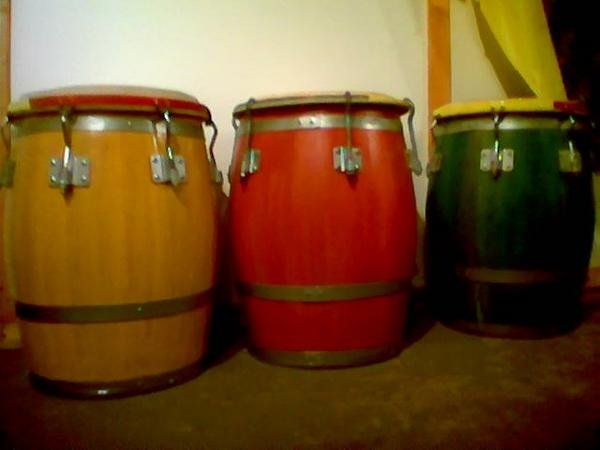
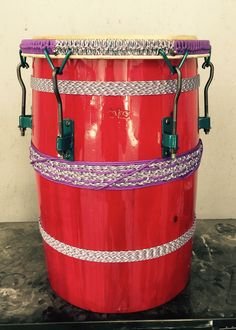


Barril de Bomba (Puerto Rico)
El barril de bomba es un instrumento que viene de la música tradicional Afro-Puertorriqueña llamada, Bomba. Durante la época colonial, los Africanos esclavizados utilizaron los barriles de importe de productos para crear este tambor, agregándole un cuero de chivo encima. Hoy en día hay muchos artesanos de barriles, ya que la Bomba sigue siendo una música viva y activa no solo en Puerto Rico, pero en todo el mundo.
The bomba barrel is an instrument that comes from traditional Afro-Puerto Rican music called, Bomba. During colonial times, enslaved Africans used imported barrels to create this drum, adding a goat skin on top. Today there are many barrel craftsmen, as the Bomba continues to be a living and active music not only in Puerto Rico, but throughout the world.
Aprende más sobre el barril de bomba aquí – Learn more about the barril de bomba here:





Tambor Alegre (Colombia)
El tambor alegre es uno de los tambores de la música tradicional Afro-Colombiana de la costa caribeña conocida como, Bullerengue. El tambor alegre también se conoce como tambor hembra, mayor, o quitambre, y hace los repiques principales en la música. Es hecha de un solo tronco de árbol en forma de cono, y con un pedazo de piel de animal encima.
The tambor alegre is one of the drums of the Afro-Colombian music form the Carribbean coast called, Bullerengue. The tambor alegre is also known as tambor hembra, mayor, or quitambre, and makes some of the main calls in the music. It is made of a tree trunk in the shape of a cone, and with a piece of animal skin on top.
Aprende más sobre el tambor alegre aquí – Learn more about the tambor alegre here:





Water Drum (North America)
El water drum, o tambor de agua, es un tambor de las comunidades indígenas de Norteamérica. Es un tambor que tiene que volver a ser ensamblada cada vez que se va usar. Su base puede ser un pedazo de tronco, o una olla de cerámica que se llena con agua, y encima se le coloca un pedazo de piel de venado, atado con cuerda. La cantidad de agua que tiene afecta el tono del sonido del tambor. El instrumento es principalmente para uso espiritual, y forma parte de diferentes ceremonias como ceremonias de peyote.
The water drum is a drum from the indigenous communities of North America. It is a drum that must be re-assembled for each use. Its base can be a hollowed log or clay pot which is filled with water, and is then a piece of deer hide is attached on top with rope. The amount of water it contains affects the pitch of the drum. The instrument is primarily for spiritual use, and is utilized in different ceremonies like peyote ceremonies.
Aprende más sobre el tambor de agua aquí – Learn more about the water drum here:





Bomba del Chota (Ecuador)
El tambor bomba es un tambor de la música Afro-Ecuatoriana llamada Bomba del Valle del Chota. Se elabora con un tronco hueco, que contiene un pedazo de piel de animal en ambos lado del tronco, y es afinada con cuerda. Se le hace un hueco pequeño en la madera para que salga el sonido, y se toca entre las piernas.
The bomba drum is a drum from the Afro-Ecuadorian music called, Bomba from the Valle del Chota. It is made from a hollowed trunk, with two pieces of animal skin on both sides, and is tuned with rope. A small hole is made in the wood for the sound to come out, and it is played between the legs.
Aprende más sobre la bomba del chota aquí – Learn more about the bomba del chota here:






Tambora (Republica Dominicana)
La tambora es un instrumento afro-caribeño de la Republica Dominicana. Antes se elaboraba con un pedazo de tronco, y hoy en día es más común que se elabore con diferentes tablas de madera que se juntan en forma de cilindro. Contiene pedazo de piel de chivo en ambos lados, y es atada con cuerda. La tambora se toca con las manos y también con palos. Se utiliza más que nada en el genero conocido como el Merengue.
The tambora is an Afro-Caribbean instrument from the Dominican Republic. Before, it was made from the piece of a trunk, and today it is more common for it to be made from different planks of wood joined together in a cylinder shape. It has a piece of goat skin on each side, and is tied with rope. The tambora is played with the hands, as well as with sticks. It is mostly utilized in the genre known as Merengue.
Aprende más sobre la tambora aquí – Learn more about the tambora here:


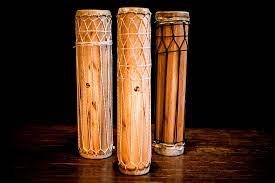

Tambor Culo ‘E Puya (Venezuela)
El Culo ‘E Puya en realidad es un conjunto de 3 tambores que se conocen como: prima, cruzao, y pujao. Cada tambor está hecha de madera del árbol lana, y conlleva piel de animal en ambos lado del tambor y envuelta con cuerda para tensar. Cada tambor tiene un tono diferente y se toca con las manos y con un palo. Los tambores originan de la región Barlovento de Venezuela, y forman parte de las fiestas tradicionales Afro-Venezolanas.
The Culo ‘E Puya is in actuality a set of 3 drums that are referred to as the: prima, cruzao, and pujao. Each drum is made out of a lana tree, with an animal skins on each end, tensed together by rope. Each drum has a different tone and is played with hands and a stick. The drums originate from the Barlovento region of Venezuela, and used in the Afro-Venezuelen traditional celebrations.
Aprende más sobre el Culo ‘E Puya aquí – Learn more about the Culo ‘e Puya here:




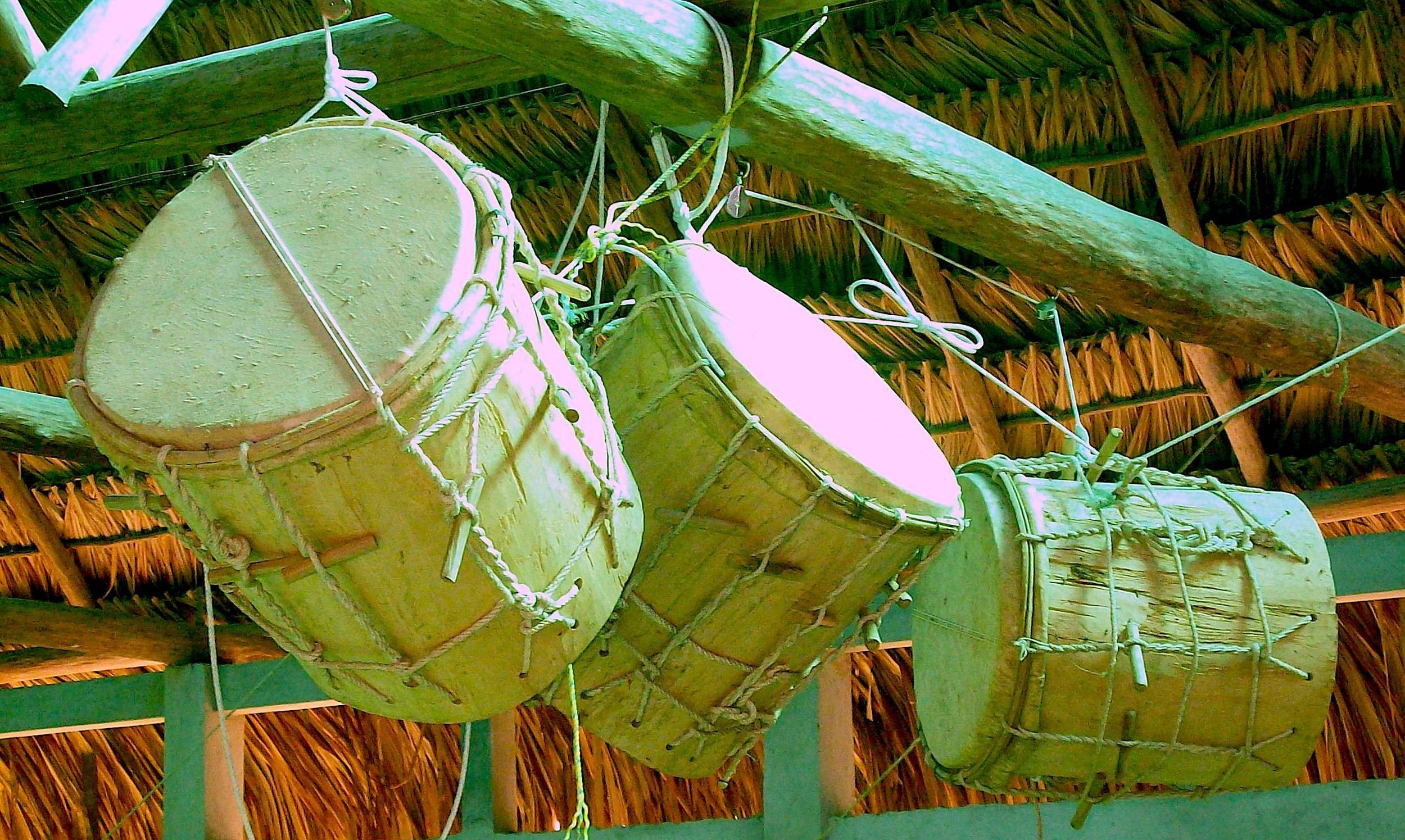
Tambor Garifuna (Belize/Honduras)
El tambor garifuna es hecha de un tronco de madera con cuero de animal, y cuerda para tensar el tambor. 8 palos se ponen dentro de la cuerda que se utilizan para afinar el tambor. En la música garifuna hay dos tamaños del tambor, conocido como el primero y el segundo. Como el territorio garifuna abarca Belize y Honduras, el tambor se encuentra en ambos lugares.
The garifuna drum is made from a tree trunk, with animal skin, and rope to tense the drum. 8 sticks are arranged in between the rope which are used to tune the drum. In garifuna music there are two sizes of the drum, known as the primero and segundo. Since the garifuna territory spans Belize and Honduras, the drum is found in both places.
Aprende más sobre el tambor garifuna aquí – Learn more about the garifuna drum here:

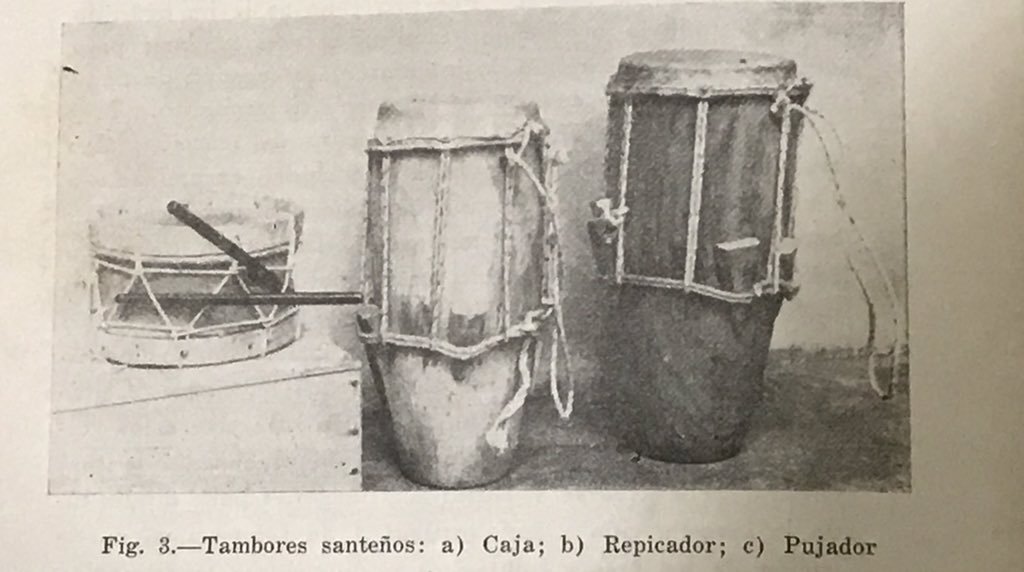


Pujador (Panama)
El tambor pujador es un tambor de Panama que se toca en la música tradicional Afro-Panameña conocida como Tamborito. Es hecho de un tronco de árbol y cuero de animal colocado de un lado, ajustado con cuerda. Para afinar se coloca unos pedazos de madera llamados “cuñas” que ajustan la tensión de la cuerda.
The pujador drum is a drum from Panama played in the Afro-Panamanian traditional music known as Tamborito. It’s made from a tree trunk with an animal skin placed on one end, secured with rope. To tune the drum, pieces of wood known as “cuñas” are placed that help adjust the tension of the rope.
Aprende más sobre el pujador aquí – Learn more about the pujador here:
These resources were created by MECA: Movimiento para la Educación Cultural y Autónoma ©2024.
Drawings by: Stephanie Rodriguez
Graphic design, descriptions, and website by: Maya Zazhil Fernández
PURCHASE OUR T-SHIRT: TAMBORES DE LAS AMÉRICAS
All proceeds from this limited edition T-Shirt will go towards our ongoing fundraising campaign, 18k for 18th Street! In celebration of being in our 3rd year of operation, we are intending to raise 18k by May 2024 and build an individual donor base, including monthly sustainers.














